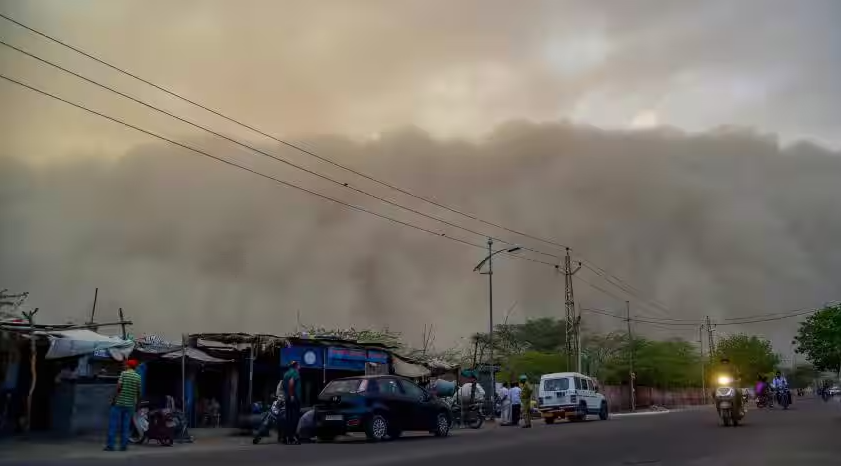It is well known that wind is one of the greatest forces in nature, which is able to produce considerable harm to the existing ecosystems as well as constructed objects. While it enjoyable to have light air, there is severe harm with strong gusty winds including destruction of property, outages, and even loss of life. A wind warning is given when weather forecasts show that storms are going to be strong enough to harm the public. This paper will address what wind warnings are; how they are given; and the measures taken in case of wind warnings to reduce hazardousness of wind in the country.
What is a Wind Warning?
Many countries have civil meteorological agencies which they include National Weather Service (NWS) that gives wind warning to the people of the dangerous wind conditions in the next few days. They are usually given when winds have been estimated to be above some speed or gusting to a definite velocity. Wind warning can be blown depending on geographical location and strength of winds in a specific region. Wind Warning For instance, the National Weather Service in the United States issues wind warnings based on the following criteria:
Wind Advisory: Demanded when the anticipated time consistent of wind speeds from 20 to 39 mph (32 to 63 km/h) or when gusts would arrive at 58 mph (93 km/h). These winds do have the potential to be dangerous although they do not often lead to large scale destruction such as those during hurricanes or tornadoes, motorists, pedestrians or persons in weakened structures can be seriously affected.
High Wind Warning: Issued when strong winds are expected to last at least thirty minutes with speeds of 40 mph (64 km/h) or more or gusts of 58 mph (93 km/h) or more. These winds can become destructive mainly to such structures as metal, wooden or mud built houses and other establishments depending on their state, trees, and power lines. It also poses a great danger to some special or premium vehicles such as trucks and buses.
Extreme Wind Warning: This is the most serious of all the wind warning where forecasters predict winds exceeding 115 miles per hour or 185 kilometers per hour along with tornadoes or hurricanes. These winds are devastating; one can fell buildings and uproot trees as well as produce life threatening conditions.
Other countries also have such systems in existence but courtesy of the different climatic conditions and measures they use. Whatever the standards, wind warnings are intended to allow people to be ready for the forces of high winds and to reduce losses.
How Wind Warnings Are Issued
They are given by meteorologists who study different situations of weather processes and make by means of different tools for wind prognosis. We can refer to such tools as weather satellites, radar systems, weather balloons, and adequate models of computation. Thereafter, should a meteorologist become aware that conditions are right for deadly winds to occur, they escalate the warning level in line with the strength and expected length of the winds.
Most of the time, wind warnings are given after other weather factors have been named such as a storm, a hurricane, a weather front among others. The warning system is a component of the broader range of processes about timely and accurate deliveries of information aimed at the protection of the population.
For instance, if a storm or hurricane is around the corner, meteorologists will focus on wind speed and change estimates of it. If conditions are thought to be bordering on severe Weather a high wind warning or an extreme wind warning is given out. These are often aired or sent via television, radio, mobile applications and other bulletin platforms, sometimes through the alert systems to inform the public.
Effects of High Winds
It becomes important to know what high winds can produce because there are many different possible dangers. Some of the most common effects include:
Property Damage: Wind can bring down roofs, burst windows and damage structures and facilities. Landscape features, such as fences, trees, and power lines are exposed to possible wind blow, and trees falling across the roadway or on vehicles are possible.
Power Outages: Demolition of power lines and other electrical installations are usual when storms blow at high speeds. Such outages may take several tens of hours and even days depending on the scale of the damage. Furthermore, the interruption of the power services likely affects the operationalization of response mechanisms thus hindering recovery.
Flying Debris: All illustrations of cyclone effects reveal how wind can turn loose items like trash cans, tree branches or small vehicles into flying debris. They may endanger the lives of people or the structures they impact when they fall.
Motor Vehicle Hazards: Blow winds are often notorious especially among large vehicles vis a vis trucks, busses or RVs making driving quite cumbersome. Bridges and any open highways can make the wind make vehicles swerve off the roads or lose control.
Coastal Flooding and Storm Surges: Along the coasts, constantly blowing wind creates high waves or surges that bring in water to the shore leading to surging and flooding during hurricanes or any other storms. This is also dangerous to human life, property, and other structures as well as marine and riverine ecosystems.
Wildfires: Fire front can be spread very quickly over a large area due to wind which adds to the conditions favorable for the formation of wildfire. A fire at such a time becomes very hard for firefighters to control because high winds will help fan flames and start new fires in other parts.
Personal Safety Threats: However, it should be noted that damaging wind is not without its dangers to people Winds exceeding given speeds are dangerous to people in a number of ways. The public suffering from fore-fall accidents; this include cases of people getting stuck by falling trees, being trapped under fallen trees, being struck by debris, or objects that are ejected by cyclone like force . Besides, people may be knocked down or even be pushed by the force of the wind ,making them be injured.
How to Prepare for High Winds
A lot can be done to reduce the effects of high wind if adequate measures are being taken prior to this incidences. Here are some steps you can take to stay safe during a wind warning:
Secure Outdoor Objects: Make sure outdoor furniture is either brought in or secured as well as trash cans and any other object that might become an airborne missile in a storm. This is especially if you have settled in an area which is vulnerable to hurricane or severe storm disasters.
Inspect Your Property: Inspect the condition of your home or building. Check if windows and doors are closed, and roofs where necessary to make sure they are well closes. Prune branches that may pose an extra risk of falling on your property during a storm.
Stay Inside: The best thing to do during a wind warning is to stay inside. Avoid windows and doors, it is even better if the winds are rather forceful. If possible try to remain indoors and in case opt for a basement or a room that does not contain a window.
Have an Emergency Kit: High winds always lead to power losses therefore before the storm hits ensure you have your emergency kits; flashlights, batteries, Wind Warning water, juices, portable foods and any medicine you may need.
Plan for Evacuation: This unrelenting wind may be just a brush of wind but those residing in areas that experience hurtful winds annually, especially coastals ones prone to hurricanes should plan on evacuation to safer places. Be familiar with the roads, resources and actions to take should you have to flee your home.
Monitor Alerts: Make sure to listen for a weather update on TV, radio, or using the weather app on your phone; look specifically at the winds and listen to the instructions given by the officials.
Drive Safely or Avoid Driving: If in any way you have to transact your duties during a wind warning, do not drive in force winds, or areas that are likely to have fallen trees or debris on the road. If you are caught in strong winds then stop your vehicle on the safe side and wait for the winds to subside.
Conclusion
Warnings on wind are an effective instrument to inform the people on the dangerous wind situations. Knowing with what these warnings relate, being critical of forecasts, and being careful will assist in minimizing loss and dangers of high winds on oneself, property, and the community. To understand how to lessen the impact of this formidable force of nature in view of the fact that climate change has already started making our weather more volatile, one has to be informed.











